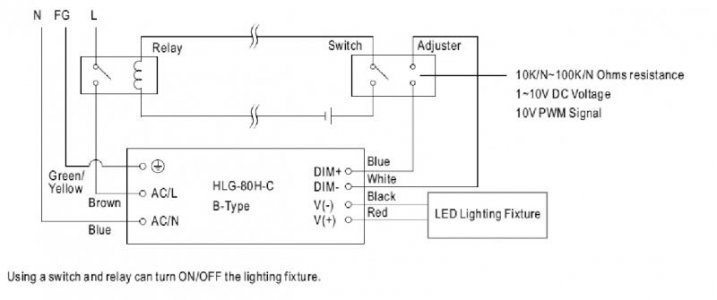Hi everyone,
So I am nearing the end of my LED build and have come up on a stumbling point. To recap, I have a 3 x DreamChip 50 build with each channel of the 3 chips connected in series and driven by an individual Meanwell HLG-80H-C700B driver. Everything is neatly tucked into an amplifier case with power to the drivers controlled by a switch and relay wired through thermal sensors that cut the circuit if the chips exceed 65 C. Everything works, chips power up, breaking thermal sensor circuit turns power off, etc.
My problem is that the LEDs only go on at 100% even if the dimming wires are not connected to anything. The drivers will accept variable resistance, PWM or 0-10V signal to control dimming and there appears to be a sensor circuit that discriminates what type of dimming signal is being received. While I haven't hooked this up to my Apex yet (the LED system is still on my workbench), applying 3V (2 x AA cells) to any or all of the dimming circuits has no appreciable effect on the light intensity. What am I missing here? Do I need to put a resistor across the dimming circuit to pull it down before applying the 0-10v signal?
Thanks,
So I am nearing the end of my LED build and have come up on a stumbling point. To recap, I have a 3 x DreamChip 50 build with each channel of the 3 chips connected in series and driven by an individual Meanwell HLG-80H-C700B driver. Everything is neatly tucked into an amplifier case with power to the drivers controlled by a switch and relay wired through thermal sensors that cut the circuit if the chips exceed 65 C. Everything works, chips power up, breaking thermal sensor circuit turns power off, etc.
My problem is that the LEDs only go on at 100% even if the dimming wires are not connected to anything. The drivers will accept variable resistance, PWM or 0-10V signal to control dimming and there appears to be a sensor circuit that discriminates what type of dimming signal is being received. While I haven't hooked this up to my Apex yet (the LED system is still on my workbench), applying 3V (2 x AA cells) to any or all of the dimming circuits has no appreciable effect on the light intensity. What am I missing here? Do I need to put a resistor across the dimming circuit to pull it down before applying the 0-10v signal?
Thanks,




